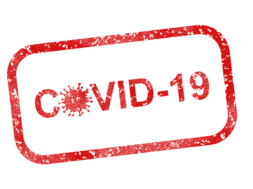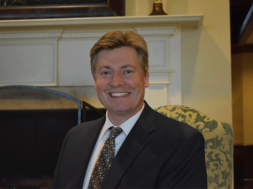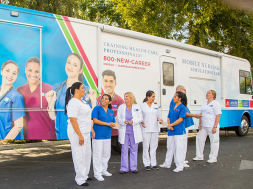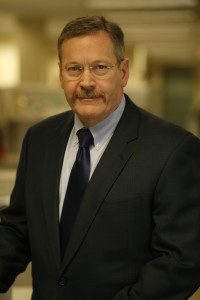
Attacking a Big Job With a Small Allotment of Time!
By Dr. John King, Independent Education Consultant
This past year I accepted a five-month assignment as interim provost at a community college in the western United States. It was quite an adventure that was a lot of work, a lot of fun and a great relearning lesson.
I became aware of the position through the Registry of College and University Presidents. The Registry is an executive search firm that only works on interim positions. One of the attractions of the position was that it was short-term and by contract I would not be allowed to consider the position on a full-time basis. I have gotten good at semi-retirement and taking care of my wife who still works however, I still enjoy a challenge and the opportunity to use my skills and my brain. For all of these reasons, the position was appealing.
The college was looking for someone who had my experience and credentials. Specifically, they wanted someone with a proprietary and entrepreneurial bent who could come into the college and generate some innovative ideas to shake the institution out of its status quo position and move it forward. They also had a specific set of objectives they wanted accomplished not just a babysitter who would mind the position until a permanent provost was brought on board. In essence, they were looking for someone who would shake up the organization and question all of their current processes and procedures.
When I conducted my initial research, based on the information they provided and an internet search, I could clearly see the future potential of the college.
It was located in the part of the state with the highest population and industrial growth potential as well as the highest income level in a relatively poor state. In looking at the potential job growth and employee need I could see that the college was well positioned to fulfill the need not only for its immediate market area but for the balance of the state and mountain west as well.
The interview process went extremely well. Over the course of my 30-plus years in higher education, I have encountered many situations like this before. In my last full-time position and in a consulting project I conducted in the prior year, my teams and I developed a comprehensive program that addressed issues of student persistence and performance that resulted in significant increases in performance across multiple campuses. There was a recognizable connection with the president of the college as I was able to provide him with responses to the questions he was looking to have answered. As I was leaving, I also presented him with a plan of action that both addresses their specific requests, as well as ideas for initiatives my research indicated, were needed for the college. As an added bonus, I also left behind the resume of a candidate for the permanent position who I knew was available and who could operationalize the ideas that I was presenting. I was ultimately offered the position.
The position was slated to officially begin Jan. 7. My assignment was slated to extend over a six-month period or until a permanent provost could be hired. I also agreed to an onboarding period with the new provost. I ended up spending four months as the Interim Provost and one month onboarding the permanent Provost.
The college requested that I come out to the campus for two weeks in December to get acclimated and get introduced to the faculty and staff. I knew that the most that I could accomplish within a six-month period would be to identify the need and develop and sell a plan of action. It would be up to the permanent provost to guide the plan through to implementation. I also knew that as with any change, there would be some resistance and a certain faction that would attempt to wait me out believing that the permanent provost would have their own plan. I knew that my sales process would need to include a lot of evidence as to why this change was necessary.
I also knew that I needed to keep my plan simple and focused so that all of the stakeholders did not get easily distracted as I saw that as one of the problems of the college.
In my introductory meeting with all of the key groups (administration, faculty, student services, etc.) I presented the three initiatives that I wanted the college to focus on. PREP (Preparation for Education and Employment Program) is a comprehensive series of academic and student service programs to support student success from the day that they enroll to the day that they graduate. “ABC” Learning addressed offering curriculum and instruction in a manner that is Adaptive to the Students individual style of learning, Blended or Online to provide flexibility to meet the students’ time and place restrictions, and Competency-Based to provide for a student-paced learning environment built around skills or competencies required for the students career path, as well as coordination with Workforce Development coursework for students already working who seek upward mobility or new skills training. And eight-week terms are designed to provide students with increased access points to courses to help improve their ability to access courses as well as speed up completion to certification. None of these concepts are new to higher education and have been used successfully. What was new to the college was the packaging and the singleness of focus on three key initiatives as opposed to numerous initiatives, grants and activities that distracted the institution away from its primary objective of successfully educating and serving students. The biggest objection would come in the area of the eight-week terms as it would disrupt their current work schedules and require some changes in the way they thought about delivering education.
When I returned in January, my first day I presented at the faculty in-service and my topic was “The Future of Higher Education.” I began to present my case for the direction that higher education was headed and why a new way of thinking was needed to address the changing needs of students and their eventual careers and employers. I left the faculty with the assignment to meet in their respective departments and discuss where they saw both higher education and the college heading in the future and report back to me. When I finally got a representative sample of feedback from the faculty it did not differ too much from what I had proposed.
I also presented the proposed plan along with the supporting research to both the administration and the Board of Trustees to obtain their approval. I then tasked the deans, student services and workforce development to identify all of the specifics of the three initiatives, taking what the college currently did well and infusing it with the ideas and materials that I brought with me. Along the way, I continued to communicate with all of the stakeholders to keep them informed of progress. Things seemed to be going along well until one month before I was scheduled to leave. While I was in another part of the state presenting the college’s new plan to the State Board of Education, the Faculty Senate President was presenting at a meeting with the locally elected Board of Trustees saying that in a poll of faculty there was no confidence in the president, me or the plan that I was proposing. Also, some members of the faculty had riled up students telling them how eight-week terms would be disastrous to their education. This necessitated a series of student forums to explain the initiative, the process and the potential timeline, none of which would impact most of them. The issue with the Faculty Senate President was a more serious issue to resolve as press coverage ensued and the misinformation that was communicated went out to the community. The shame of the situation was that students should never have been involved or informed of any changes until plans had been firmed up and finalized. Also, many of the faculty had never been contacted about the supposed poll and were actually in favor of the changes. The big objection was to eight-week terms which in fact was how summer term courses were taught and many of the technical program courses were taught in blocks shorter then eight-weeks.
Part of the underlying problem was that the college was without serious academic leadership for some time and discipline was lax.
One of my primary objectives was to evaluate processes and procedures and bring order to some of the chaos that existed. I began to question current processes, particularly around fiscal issues. Before signing off on any activity or expenditure I asked how is this supporting student learning and is this in the best interest of the institution? If I could not receive a satisfactory answer the request was denied, where previously it had been automatically approved. People were naturally unhappy at being questioned and having their requests denied. The faculty were also unhappy about the issue of rank and promotion and overload assignments. The college had placed limits on the number of promotions that were approved each year due to financial considerations which did not sit well. I also questioned the amount of overload assignments as ineffective course scheduling and a lack of timely monitoring of class size resulting in an inordinate of faculty overload assignments. The faculty viewed overload as an entitlement and a way to supplement their salaries and I questioned its impact on the fiscal health of the college. I wrote an email to my direct reports asking them to look at expenditures and if they were necessary and helping us to advance our objectives. One of the questions I asked was if people needed to be fed at every meeting? Somehow this discussion on expenditures, in general, became a crusade about the use of food at meetings and escalated to the Board of Trustees. My point was that the college spent a significant amount of money annually on food for meetings and what could we have done to support student learning with some of those funds. Unfortunately, it became one more injustice that administration was inflicting on people. I was told when I arrived that the college’s attempts at fiscal responsibility had been negatively viewed as the administration’s attempt to turn the institution into a for-profit college. My experience in the for-profit sector did not allay faculty concerns although they chose to ignore my 13 years at a public educational system and my teaching experience at a not-for-profit university. My questioning and actions, although necessary, did not add to my popularity.
At the end of my term, I was able to hand off the project to the permanent provost who happened to be the candidate whose resume I brought with me in my initial interview. Having worked with her in a previous position I knew that she would support the three initiatives that I had proposed and because of her excellent operational and leadership skills I felt assured that she would make the vision a reality and a success.
Throughout this process, I relearned some valuable insights about taking on a project within a short timeframe.
I say relearned because I should have known that I would run into some of these issues however, when you walk into a new situation you want to give everyone the benefit of the doubt. The president was a huge supporter and proponent of change in order to grow. The senior management team also was on board with my proposals and provided needed support. My direct reports slowly warmed up to my ideas and eventually saw the benefit and were willing to buy into the process. Many of the faculty members were supportive, especially those who had some experience with similar initiatives. Most of the resistance came from faculty who came from a traditional university background and were resistance to the culture of a community college.
The first lesson I learned or relearned, was do your research and make sure you have all of the facts. The college had lulled itself to sleep thinking that it was in great shape when in fact there were some serious issues. The college touted a population of 30,000 students however, the number was misleading. More than one-third of the population was made up of dual-credit students with 95 percent of them taking classes at their local high school and never setting foot on campus. Only 13 percent of these students matriculated to the college to complete a degree and in a survey of local area high school students only 16 percent considered a two-year college as an option after graduation. Less than one-third of the college’s 30,000 students are enrolled in a degree-seeking program and only 17 percent completed a degree or certificate within one year. Also, the college’s prime audience of academic and technical students has been declining since 2013. So, when you look at the fact that the majority of the college’s students are part-time, their traditional population is in decline and not expected to grow and the largest portion of their population is dual-credit, paying a reduced tuition, never setting foot on campus and projected to enroll in a four-year institution after graduation, the college had some serious issues to deal with. The college needed more students taking more credits. It needed to attract more adult learners to compensate for the declining high-school population and increase the workforce development population which would provide an additional revenue stream. Clouding this issue was the fact that population statistics kept increasing due to the swelling dual-credit population. Also, the administration had done a good job of fiscal management so most of these issues were not readily visible.
Second, armed with the research and data it is important to sell, sell, sell your ideas.
In addition to providing the data above, I provided the deans and the faculty with a steady stream of articles and reports on the future of higher education and studies that supported the three initiatives that I had proposed. I knew that I needed to educate the college, what I didn’t know was the lengths I would have to go to, to bring them up to speed. I posted over 850 articles, reports and studies on educational trends, technology, techniques and instructional methodologies as well as leadership and management. I also attempted to keep people up to date on the happenings in Washington D.C. with negotiated rulemaking, issues with the Department of Education and accreditation. I summarized this information and presented it to the management team, faculty and the Board of Trustees to justify all of the proposed changes I was suggesting. The biggest lesson I relearned, but should have known, was that some people do not want to hear the facts but rather have their own version of the truth. As a way to resist change, some individuals will refuse to look at the facts and instead create their own reality.
The third lesson I learned was that I needed to question everything. Prior to my arrival, there was a lack of academic leadership and people were allowed to operate on their own initiative with no clear direction. Every day brought a new discovery and when I began to question the logic of certain activities, initiatives and expenditures I was met with much resistance. I kept reinforcing that my decision making was motivated by two primary questions … was this in the best interest of student learning and the best interest of the institution. When I discovered that population estimates for the spring term were down significantly creating a budget deficit, I sent an email to my direct reports asking them to look at all of their expenditures and determine if they were necessary. One of the lines of my email asked if food was necessary for every meeting. This issue escalated to the Board level which was totally unnecessary and ridiculous. Annual food expenditures for meetings each year was well over $150,000. I attempted to drive home the point that smarter decision making when it came to expenditures could result in more resources to support student learning. I used questioning and challenging as a means to train and develop my deans and other direct reports. They were very responsive to my efforts and I saw tremendous growth and development in the team.
Fourth on my list of lessons to learn, or relearn as the case may be, is to beware of the haters but don’t take it personally. Any management position automatically comes with a target on your back. There are always people who resent authority and want to take you down a peg or two. When you are trying to implement change in a short period of time you are going to ruffle some feathers. The Governor’s Office controlled the amount of state fund that would be used to increase faculty salary increases, and those amounts are never certain. The college was responsible for making up any differences in state allocated funds and those needed to compensate faculty from the general fund. Because faculty rank and promotion dollars were subtracted from these funds the administration was forced to limit the number of annual faculty promotions. This did not sit well with certain members of the faculty and was the principal item on the agenda of the faculty senate. The other item was overload classes. When I discovered that 30 percent of the spring classes had fewer than 10 students and that the majority of these classes were assigned to faculty as overload I questioned the process. Faculty considered overload as an entitlement and a way to supplement their salaries. My position was that a million-dollar shortfall could have been significantly offset by more efficient scheduling and class size management. The faculty argument was that they depended and counted on these overload classes as part of their compensation. I challenged the deans to develop a more efficient and effective plan for scheduling efficiency and overload use which they responded to admirably for the summer and fall terms. Needless to say, the faculty did not react favorably to these actions and negatively impacted some of their behavior.
The fifth and final lesson of a short-term assignment, which I am happy to say in this case occurred, is to ensure that your successor is the right candidate.
When I arrived for my initial interview, I brought with me the resume of an individual who I knew was both available and would be the perfect candidate for the permanent position. Having both worked with the candidate and followed her career I knew that her abilities and experience prepared her for the job at hand. Also, having addressed a similar challenge before I knew that she would appreciate the development work that I had done and would operationalize and enhance the initiative I had proposed. I lobbied with the president and the management team however her talent and skills were readily evident, and she was selected for the position. My final month on the job was spent onboarding and supporting the new provost, however, she hit the ground running and was up to speed in no time at all.
The hardest part of any interim assignment is the separation from your home and family. Although I truly enjoyed this assignment, I was ready to return home. I was presented with a specific set of objectives when I accepted the assignment and I moved the needle on all of them as far as I was able with the time and resources at my disposal. I also set plans in motion on each of these issues that would ensure success for the permanent provost. I enjoyed and liked all of the individuals I had the pleasure to work with at the campus, state and community level. I appreciated the support I received from the president and he gained my respect and admiration for his dedication to the campus and the community, and his desire to innovate and move the college forward. The management team was extremely supportive, and I enjoyed being a part of their group. I appreciated the support and respect my direct reports extended to me and I know that they will continue to grow and develop under their new leader. I regret that I was not able to develop a deeper bond with the faculty, but time and need restricted my ability to connect with them. Where I was able to connect with members of the faculty I was impressed by their efforts and respect all that they do for their students. Above all I developed an affinity for the institution. I arrived excited about the potential of the institution and I left with the same enthusiasm. I am proud of my efforts for the college and am content that my time there will result in a positive movement forward for the institution. I was able to accomplish a great deal in a short amount of time and this experience will serve to keep me excited and motivated for my next assignment.
DR. JOHN KING is a seasoned professional dedicated to providing strategic services for organizations seeking improved operational effectiveness and growth through change or strategic direction. Dr. King can be best described as an educator, entrepreneur, futurist, innovator, marketer, strategist and leader. John King is an independent strategic consultant based in Naples, Florida. Throughout his career, John has been focused on bring innovation and forward thinking to the organizations and institutions with which he has been associated, most recently as Senior Vice President and Chief Academic Officer at Lincoln Educational Services. In addition to serving as SVP and Chief Academic Officer of Lincoln Educational Services Inc., he has served as Senior Vice President of Academic Affairs at Career Education Corporation, Provost & Vice President of Academic Affairs at Brown College in Minnesota, and Dean of Business & General Education at St. Paul Community & Technical College. John has also been both a full-time and adjunct instructor at the undergraduate and graduate level. John recently concluded five month assignment as Interim Provost at the College of Western Idaho, 30,000 student community college with campuses in Nampa and Boise Idaho.
Prior to entering education in 1988, John worked in Marketing and Communications with such firms as Campbell-Mithun Advertising in Minneapolis, Tec Trans International Inc. in Minneapolis and Allied Stores Marketing Corporation in New York. John also operated his own consulting firm for 10 years and was a partner in The Creative Edge and Bijou, commercial and corporate video production companies.
Dr. King has served as chair or trustee for various colleges including Lincoln College of New England, Lincoln College of Technology – Columbia, MD, and McIntosh College in New Hampshire. John has also served on the Dakota County (Minnesota) Private Industry Council, the Eagan, Minnesota Economic Development Commission, the Small Business Management Program Advisory Committee of Dakota County Technical and Community College, the Employee Assistance Program Advisory Board of Family Service of Greater Saint Paul, and the Small Business Publicity Committee of the Minneapolis Chamber of Commerce. John was also on the Board of Directors of the Twin Cities Marathon.
In 2010 Dr. King was featured in the cover story “Who Influenced Education This Year” in Career College Central Magazine.
John earned a BA in Economics at St. Bernard College, a Masters in Education from the University of Minnesota and a Doctorate in Educational Leadership from the University of St. Thomas.
She earned her Bachelor of Science in Nursing from Pensacola Christian College in Pensacola, Florida. She furthered her education and received a Master of Science in Nursing from the University of Portland in Portland, Oregon.
Contact Information: Dr. John King // Independent Education Consultant // 862-438-7039 // King0558@verizon.net









